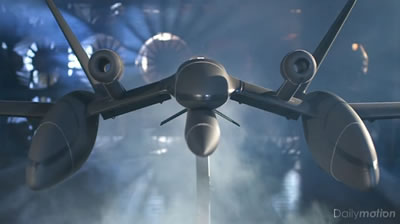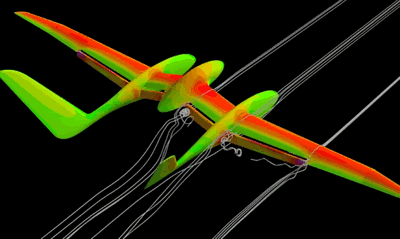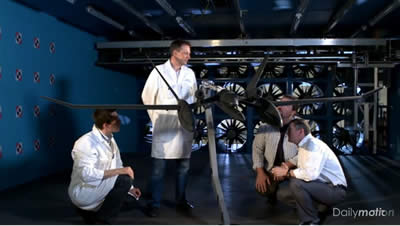Wind tunnel test of the EOLE airborne launcher
The Eole airborne demonstrator, the development of which is being coordinated by Onera, is part of the Perseus student program, Cnes being the contracting authority.

The model of the Eole airborne launching demonstrator in the throat of the L2 wind tunnel at the Lille center
The Eole airborne demonstrator, the development of which is being coordinated by Onera, is part of the Perseus student program, Cnes being the contracting authority.
The tests conducted in the L2 wind-tunnel at Onera Lille will make it possible to define all of the aerodynamic, static and dynamic characteristics of the demonstrator to establish the control laws and assess its performance. This project to build a flying demonstrator, for which manufacturing and final implementation are assigned to Aviation Design [adjets.com], will result in an experimental system which is expected to be operational mid-2013.
The Eole project comes out of work done with Cnes over the past few years. It is based on the principle of airborne launching. The general idea is to have a rocket carried by an aircraft, or automatic vehicle similar to an aircraft, up to a certain altitude before ignition. The first stage of the "conventional" launcher is replaced by a vehicle that can be reused for subsequent launches.
This type of launch targets the market for putting nano-satellites into orbit – these are satellites with masses between a few kilograms and several dozen kilograms. The rocket corresponding to this requirement would have a mass of 4 tons and the carrier would then necessarily have a wing span comparable to that of a Falcon or even an A320, for example (the wing span of the demonstrator is only 6.7 m).
Traditionally, these satellites travel as the passengers of standard commercial satellites on conventional launchers (Ariane 5 type). The drawback: the trajectory is not optimal for the small system. Nor can the launch windows be chosen. The advantage of a system dedicated to the launching of these nano-satellites is that it improves efficiency and performance and allows for prompt reaction to events such as humanitarian catastrophes (implementation of observation systems or dedicated communications relays).
Onera’s objective is to make an instrumented flying demonstrator (6.7 m wing span) with dynamic representativeness capacities. This will be a test rig able to carry rocket models and to release them, mainly to understand the interactions between the two vehicles at the moment of releasing, but also to predict the flight behavior and qualities to supplement the wind tunnel tests and calculations.
The Eole demonstrator is covered by a patent application, shared by Aviation Design, Cnes and Onera.
The Onera team in charge of the study is composed of Jean Hermetz [Jean.Hermetz\AT\onera.fr] and Julie Ledogar [Julie.Ledogar\AT\onera.fr]. This project is supervised at the Cnes by Jean Oswald [Jean.Oswald\AT\cnes.fr].

CFD around Eole

Technical discussion around Eole 1:2 scale model in the L2 test section